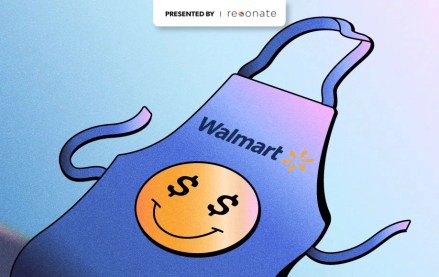
Ash Nashed is CEO of Adblade, an ad platform.
Consumers ignore display banners. This is common knowledge, and it’s the impetus for brands’ current push for new units and formats that actually resonate with consumers. The display industry has tried to keep up, but the new solutions have thus far been unappealing takes on the existent banner structure.
Nowhere is this more obvious than with the relatively new Rising Stars units. So many networks and publishing groups are putting their faith in the fact that these larger rich-media units will save the day. In reality, the Rising Stars are trying to reinvent what fits in the banner unit rather than trying to reinvent the format and create something new. It’s tantamount to repainting the walls of the room instead of getting new furniture. For display to survive — and thrive — everyone in the ecosystem needs to face the truth and stop hitching their hopes to IAB units.
Native advertising, like video and social, has grown because it doesn’t look or feel like stale ad units. The days of shoving a logo in front of a consumer are over. The ad world is moving toward starting conversations between brands and prospects, and standard display units can’t do this, not even the Rising Stars.
Display itself has too many benefits to completely die. Scale, efficient automated buying and adaptive creative are all valuable tools to advertisers and part of the reason why they turn to digital in the first place. For display to survive, it needs to shed the rigors of the current IAB standards and find ways to become part of the consumer’s online experience. This may include in-text ads that appear as hyperlinks within the body of content. Alternately, it will be ads that appear alongside or after content, with units that speak to content-minded consumers.
The most important element for the future of display is that it has to feel like content. Again, look at native advertising and sponsored content. If display units appear very close to content and look and feel like part of the overall experience, then consumers are far more likely to click or engage. Rich media and in-banner auto-play video have little appeal because they have nothing to do with the reason the consumer is on the page. The Rising Stars ads still look and feel like ads, and eventually consumers will tune these out as well.
A content-like ad, whether it is a text link or has an image attached, is going to inspire curious individuals to continue their pursuit of worthy entertainment. After all, these are the consumers an advertiser wants to reach most. Those who scroll through a page quickly or jump around likely aren’t interested in advertising. But those who take the time to consume content will do the same for an ad message. Flashy, gimmicky units are great, but reaching an audience is the key and the only way display will grow.
Image via Shutterstock
More in Media

Meta AI rolls out several enhancements across apps and websites with its newest Llama 3
Meta AI, which first debuted in September, also got a number of updates including ways to search for real-time information through integrations with Google and Bing.

Walmart rolls out a self-serve, supplier-driven insights connector
The retail giant paired its insights unit Luminate with Walmart Connect to help suppliers optimize for customer consumption, just in time for the holidays, explained the company’s CRO Seth Dallaire.

Research Briefing: BuzzFeed pivots business to AI media and tech as publishers increase use of AI
In this week’s Digiday+ Research Briefing, we examine BuzzFeed’s plans to pivot the business to an AI-driven tech and media company, how marketers’ use of X and ad spending has dropped dramatically, and how agency executives are fed up with Meta’s ad platform bugs and overcharges, as seen in recent data from Digiday+ Research.





